
Key Social Media Legal Battles Impact In 2024
How major social media legal battles in 2024, including Supreme Court rulings and the Kids Online Safety Act, are impacting businesses and digital marketing.
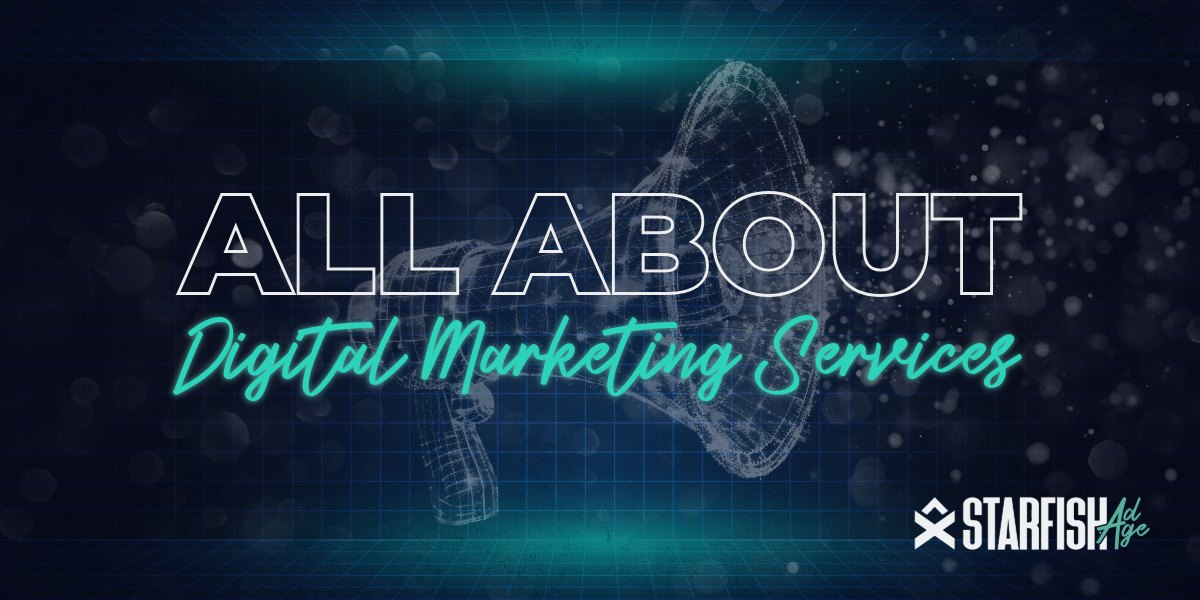
Digital marketing uses online platforms and tools to promote and grow a business. This can include various activities such as search engine optimization (SEO), pay-per-click (PPC) advertising, social media marketing, content marketing, email marketing, and more. Unlike traditional marketing methods, digital marketing allows businesses to reach a global audience and engage with customers in real time.
The beauty of digital marketing lies in its versatility and adaptability. It allows businesses to have a digital marketer create personalized marketing campaigns that resonate with their target audience. Through engaging social media posts, informative blog articles, or targeted email campaigns, digital marketing provides the tools and strategies needed to compete with larger companies and achieve business goals.
The costs of hiring a digital marketing company can vary depending on the services required, the company’s expertise, and the project scope. Some companies offer flexible pricing models like hourly rates, monthly retainers, or project-based fees. Businesses should discuss their budget and needs with the digital marketing agency or company to find a suitable arrangement.
The success of digital marketing campaigns can be measured using various metrics, such as website traffic, conversion rates, click-through rates, and ROI. Tools like Google Analytics and social media insights provide valuable data for tracking and analyzing performance. Reviewing these metrics helps businesses understand what’s working and make data-driven decisions to optimize their campaigns.
The most important digital marketing services for businesses include SEO, PPC advertising, social media marketing, content marketing, and email marketing. These services help businesses increase online visibility, attract and engage customers, and drive sales. The services required may vary based on the business’s goals, industry, and target audience.
Improving a business’s online presence involves optimizing the website for search engines, creating valuable and engaging content, leveraging social media platforms, and using paid advertising to reach a wider audience. Regularly updating and optimizing the website, engaging with the audience on social media, and investing in SEO and PPC can help enhance online visibility and attract more customers.
Choosing the right digital marketing company involves evaluating their experience and expertise, reviewing client testimonials and case studies, understanding their strategies and approaches, and assessing their communication and support. Finding a company that aligns with your business goals and can deliver the desired results is important. Discussing your needs and expectations with the digital marketing company can help ensure a successful partnership.

Search Engine Optimization (SEO) is optimizing a website to rank higher in search engine results pages (SERPs). This involves keyword research, on-page optimization, and link-building techniques to improve a site’s visibility and attract organic traffic. SEO is a cost-effective way for businesses to increase online visibility and attract potential customers actively searching for their products or services.
On-page search engine optimization refers to optimizing individual web pages to improve search engine rankings. This includes optimizing content, meta tags, headers, and images to ensure they are relevant and valuable to users. On-page SEO improves site speed, mobile friendliness, and overall user experience.
Off-page SEO involves activities that take place outside of your website to improve its search engine rankings. This includes building high-quality backlinks from reputable websites, social media marketing, and online reputation management. Off-page SEO helps establish authority and credibility, which are important factors in search engine algorithms.
Technical SEO focuses on optimizing a website’s technical aspects to improve its search engine rankings. This includes optimizing site speed, ensuring mobile-friendliness, improving site architecture, and implementing structured data. Technical SEO ensures that search engines can crawl and index your website effectively.
Addressing technical issues and optimizing a website’s backend can significantly improve search engine rankings. Regular audits and updates are necessary to maintain and enhance technical SEO performance. Technical SEO is the backbone of a well-optimized website and should not be overlooked.
Local SEO is optimizing a website to rank higher in local search results. This includes optimizing Google My Business listings, building local citations, and creating content that targets local keywords. Local SEO is essential for businesses that rely on local customers and foot traffic.
By appearing in local search results and on Google Maps, businesses can attract more customers searching for products or services nearby. Local SEO helps companies to connect with their community and build a solid regional presence. It’s a cost-effective way to drive targeted traffic and increase visibility in your local area.
SEO offers numerous benefits for small businesses. It helps increase visibility, drive organic traffic, and build credibility. Unlike paid advertising, SEO provides long-term results that benefit your business over time. By appearing on the first page of search results, companies can attract more qualified leads and establish themselves as industry leaders.
SEO is a cost-effective digital strategy that can deliver significant returns even for small businesses with limited marketing budgets. By investing in SEO, small businesses can compete with larger companies and achieve sustainable growth. SEO also complements other digital marketing efforts, such as content marketing and social media, by driving organic traffic to your website.
Pay-Per-Click (PPC) advertising is a digital marketing strategy where businesses pay for each click on their ads. PPC ads appear on search engines, social media platforms, and other websites, allowing businesses to reach a targeted audience quickly. This model ensures that companies only pay for engagement, making it a cost-effective way to drive traffic and conversions.
PPC advertising offers immediate visibility and results. By creating well-optimized ads and using advanced targeting options, businesses can attract potential customers actively searching for their products or services. PPC is an excellent way to complement SEO efforts and achieve short-term marketing goals.
Google Ads is one of the most popular PPC advertising platforms. It allows businesses to create and display ads on Google’s search engine and its network of partner sites. Google Ads offers various ad formats, including text, display, video, and shopping ads. Businesses can target specific keywords, locations, and demographics to reach their desired audience.
Google Ads provides a powerful way for businesses to increase visibility and drive website traffic. Companies can achieve higher click-through rates and conversions by creating well-optimized ads and using advanced targeting options. Google Ads also offers robust analytics and reporting tools, allowing companies to track performance and make data-driven decisions.
Bing Ads, now known as Microsoft Advertising, is another PPC advertising platform that allows businesses to create and display ads on Bing’s search engine and its partner sites. Bing Ads offers features similar to those of Google Ads, including keyword targeting, location targeting, and various ad formats. While Bing’s market share is smaller than Google’s, it still provides a valuable opportunity for businesses to reach a different audience.
Bing Ads can be a cost-effective alternative to Google Ads. The platform often has lower competition and cost-per-click (CPC) rates, allowing companies to achieve a higher ROI. By running campaigns on both Google Ads and Bing Ads, businesses can maximize their reach and attract more potential customers.
Social media ads involve creating and displaying ads on social media platforms like Facebook, Instagram, Twitter, LinkedIn, and Pinterest. These ads can be highly targeted based on user demographics, interests, and behaviors. Social media ads are an effective way to reach a large and engaged audience quickly.
Social media ads offer a variety of ad formats, including images, videos, carousels, and story ads. By creating engaging and visually appealing ads, businesses can capture the attention of their target audience and drive traffic to their website. Social media ads also provide robust analytics and reporting tools, allowing businesses to track performance and make data-driven decisions.
Remarketing and retargeting display ads to users who have previously visited your website or interacted with your brand. These ads appear on other websites and social media platforms, reminding users of your products or services and encouraging them to return and convert. Remarketing is a powerful way to re-engage potential customers and increase conversion rates.

PPC and SEO are effective digital marketing strategies but serve different purposes. PPC offers immediate visibility and results, while SEO provides long-term, sustainable growth. The best approach depends on your business goals, budget, and timeline.
PPC is an excellent option for businesses looking to achieve quick results and drive immediate traffic. It allows for precise targeting and immediate feedback, making it ideal for time-sensitive campaigns. On the other hand, SEO is a long-term strategy that builds credibility and drives organic traffic over time.
Social media marketing uses social media networks to promote business and engage with target audiences. This can include creating and sharing content, running ads, and interacting with followers. Social media marketing is essential for building brand awareness, fostering community interaction, and driving traffic to your website.
Social media platforms allow businesses to reach a large and diverse audience. This helps build brand and customer loyalty and provides valuable insights into customer preferences and behavior. With the right social media strategy, businesses can create engaging content that resonates with their audience and drives conversions.
Social media marketing offers numerous benefits for businesses. It helps build brand awareness, drive website traffic, and engage with customers in real time. Companies can establish themselves as industry leaders and build a loyal following by creating and sharing valuable content.
Moreover, social media marketing provides valuable insights into customer behavior and preferences. Businesses and digital marketing experts can refine their marketing strategies by analyzing engagement metrics and creating content that resonates with their audience. Social media marketing is a cost-effective way to reach a large and diverse audience, making it an essential component of any digital marketing strategy.

A good content marketing strategy involves creating and sharing valuable content to attract and engage a target audience. This can include blog posts, videos, infographics, ebooks, and more. Content marketing aims to provide helpful information that solves problems, answers questions, and builds trust with potential customers.
Content marketing is a powerful way for businesses to establish authority and credibility in their industry. By consistently producing high-quality content, companies can attract and retain a loyal audience, drive organic traffic to their website, and generate leads. Moreover, content marketing complements other digital marketing efforts, such as SEO and social media, by providing valuable content that can be shared and promoted across various channels.
Blogging offers a way to showcase expertise and build relationships with potential customers. By addressing common questions and providing valuable insights, businesses can attract readers and encourage them to return for more content. Blogging also supports SEO efforts by providing fresh and relevant content that search engines can index.
Video content involves creating and sharing videos to engage the audience and convey information visually and dynamically. Videos can include tutorials, product demonstrations, behind-the-scenes footage, customer testimonials, and more. Video content is highly engaging and can capture the audience’s attention more effectively than text alone.
Infographics are visual representations of information, data, or knowledge designed to present complex information quickly and clearly. Infographics can include charts, graphs, icons, and other visual elements that make the content more engaging and easier to understand. Infographics are an effective way to convey information and capture the audience’s attention.
Ebooks and whitepapers are long-form content pieces that provide in-depth information on a specific topic. Ebooks are typically more visually appealing and designed for a broader audience, while whitepapers are more technical and targeted towards industry professionals. Both formats offer valuable insights and can be used to generate leads and establish authority.
Podcasting involves creating and distributing audio content that listeners can download or stream. Podcasts can cover various topics, from industry insights and interviews to storytelling and educational content. Podcasting is a growing medium that allows businesses to reach their audience in a new and engaging way.
Content marketing supports other comprehensive digital marketing strategies and efforts, such as SEO and social media. Businesses can increase their reach and engagement by providing valuable content that can be shared and promoted across various digital channels. Content marketing is a cost-effective way to attract and retain customers, making it an essential component of any digital marketing strategy.
Email marketing sends targeted messages to a list of subscribers to promote products, services, or content. This can include newsletters, promotional offers, and personalized recommendations. Email marketing is an effective way for businesses to nurture customer relationships and drive repeat business.

Building an email list involves collecting email addresses from potential and existing customers who have opted in to receive communications from your business. This can be done through website sign-up forms, social media promotions, events, and other lead-generation tactics. Having a high-quality email list is essential for successful email marketing campaigns.
Creating engaging newsletters involves designing and writing email content that captures the audience’s attention and encourages them to take action. Newsletters can include updates, promotions, blog highlights, and other valuable information. The key to successful newsletters is providing relevant, engaging content that resonates with subscribers.
Automated email campaigns involve sending pre-scheduled emails to subscribers based on specific triggers or actions. This can include welcome emails, follow-up emails, abandoned cart reminders, and more. Automation ensures that the right messages are sent to the right people at the right time, increasing efficiency and effectiveness.
Email marketing offers numerous benefits for businesses. It helps build and nurture customer relationships, drive repeat business, and increase sales. By delivering targeted and relevant content, companies can engage with their audience and encourage them to take action.
Web design and web development often involve creating and maintaining a visually appealing, user-friendly website optimized for search engines. This includes designing the layout, coding the site, and ensuring responsiveness across different devices. For businesses, having a professional website is crucial for establishing an online presence and attracting potential customers.
A well-designed website enhances the user experience, improves search engine rankings, and drives conversions. By investing in web design and development, businesses can create a strong foundation for their digital marketing efforts and provide a seamless experience for their visitors.
A mobile-friendly website improves user experience and increases the chances of retaining visitors. Search engines also prioritize mobile-friendly sites in their rankings, making them essential for SEO efforts. By investing in mobile-friendly design, businesses can ensure their website is accessible and user-friendly for all visitors.
User experience (UX) design focuses on creating a website that is intuitive, easy to navigate, and provides a positive user experience. This includes designing clear and consistent navigation, optimizing load times, and ensuring the site is accessible to all users. Good UX design helps keep visitors on the site longer and encourages them to take desired actions, such as purchasing or signing up for a newsletter.
E-commerce solutions involve creating and managing an online store where customers can browse and purchase products or services. This includes designing the storefront, integrating payment gateways, managing inventory, and providing customer support. For businesses, having an e-commerce platform opens up new revenue streams and allows them to reach a broader audience.
By investing in e-commerce solutions, businesses can provide customers with a convenient and secure shopping experience. This not only increases sales but also enhances customer satisfaction and loyalty. E-commerce platforms also offer tools for tracking and analyzing sales data, helping businesses make informed decisions and optimize their online store.
Professional web design offers numerous benefits for businesses. It enhances the user experience, improves search engine rankings, and drives conversions. A well-designed website provides a positive first impression, builds credibility, and encourages visitors to take action.
A professional website supports other digital marketing efforts, such as SEO and content marketing, by providing a solid foundation for all online sales and marketing activities. Businesses can partner with skilled web developers to create a website that meets their goals and delivers results.

Analytics and reporting involve tracking and analyzing the performance of digital marketing campaigns to measure their effectiveness and identify areas for improvement. This can include monitoring web traffic, conversion rates, and social media engagement. For businesses, having access to detailed analytics is essential for making data-driven decisions and optimizing marketing efforts.
Google Analytics is a powerful tool for tracking and analyzing website traffic and user behavior. It provides detailed insights into how visitors find and interact with your site, allowing businesses to measure the effectiveness of their marketing efforts. Google Analytics can track page views, bounce, and conversion rates.
Regular reporting offers numerous benefits for businesses. It provides valuable insights into the performance of digital marketing campaigns, helping businesses identify what’s working and what’s not. Regular reporting also allows companies to stay accountable and track their progress toward their goals.
Regular reporting is essential for businesses to make data-driven decisions and optimize marketing efforts. By reviewing performance data regularly, companies can identify trends, uncover opportunities, and make informed decisions. Regular reporting also helps businesses stay agile and responsive to market changes, ensuring their marketing efforts remain effective and aligned with their goals.

Conversion Rate Optimization (CRO) is improving a website’s performance to increase the percentage of visitors who take the desired action, such as purchasing, signing up for a newsletter, or filling out a contact form. CRO involves analyzing user behavior, testing different website elements, and making data-driven adjustments to improve conversion rates.
For businesses, CRO is essential for maximizing the effectiveness of their digital marketing campaigns. By optimizing their websites for conversions, businesses can increase their marketing campaigns’ return on investment (ROI) and achieve better results. CRO is a continuous process that requires ongoing analysis, testing, and optimization.
A/B testing compares two versions of a web page or element to determine which one performs better. This involves creating two versions (A and B) and splitting the traffic between them to see which version generates more conversions. A/B testing is a powerful tool for identifying the most effective design, content, and user experience elements.
A/B testing provides valuable insights into business user preferences and behaviors. Businesses can identify what works best by testing variations and making data-driven decisions to improve conversion rates and bring in more qualified leads. A/B testing is essential to any CRO strategy and helps companies achieve better results.
User testing involves observing and analyzing how real users interact with a website to identify usability issues and areas for improvement. This can include techniques such as usability testing, heatmaps, and session recordings. User testing provides valuable insights into user behavior and preferences, helping businesses optimize their website for better performance.
User testing is essential for understanding how visitors navigate their websites and identifying potential barriers to conversion. Businesses can improve the user experience and increase conversion rates by addressing usability issues and making data-driven adjustments. User testing is crucial to any CRO strategy and helps companies achieve better results.

Landing page optimization involves improving landing pages’ design, content, and layout to increase conversions. This includes optimizing headlines, images, call-to-action buttons, and forms to ensure they are relevant and engaging to visitors. Landing page optimization aims to create a seamless and compelling experience that encourages visitors to take the desired action.
Landing page optimization is essential for businesses to maximize the effectiveness of their digital marketing campaigns. By creating high-converting landing pages, businesses can increase the ROI of their marketing efforts and achieve better results. Regularly testing and optimizing landing pages is crucial for maintaining and improving conversion rates.
Conversion Rate Optimization (CRO) offers numerous benefits for businesses. It helps increase the percentage of visitors who take the desired action, leading to higher conversion rates and better ROI. By optimizing their website for conversions, businesses can maximize the effectiveness of their digital marketing and achieve better results.
Moreover, CRO provides valuable insights into user behavior and preferences. Businesses can make data-driven decisions to improve the user experience and increase conversions by analyzing user data and testing different elements. CRO is a continuous process that requires ongoing analysis, testing, and optimization, but the benefits make it a worthwhile investment.

Influencer marketing involves partnering with influencers—individuals with a large and engaged following on social media—to promote a business or product. Influencers can help businesses reach a wider audience, build brand credibility, and drive sales. This marketing strategy leverages social media advertising and influencers’ trust and influence with their followers.
Finding the right influencers involves identifying individuals who align with your brand values and target audience. This can include researching influencers in your industry, analyzing their engagement rates, and evaluating their content quality. Finding the right influencers is important for creating authentic and effective influencer marketing campaigns.
Building relationships with influencers involves establishing trust and collaboration to create successful campaigns. This can include contacting influencers, negotiating partnerships, and providing clear guidelines and expectations. Strong relationships with influencers are essential for creating authentic and effective campaigns.
Building influencer relationships can lead to long-term partnerships and increased business brand loyalty. Companies can create impactful campaigns that resonate with their target audience by collaborating with influencers and providing them with the necessary tools and support. Regular communication and feedback are essential for maintaining strong relationships with influencers.
Measuring the success of influencer campaigns involves tracking key metrics such key performance indicators such as engagement rates, reach, and conversions. This can include analyzing social media analytics, web traffic, and sales data. Measuring the success of influencer campaigns is essential for understanding their impact and optimizing future strategies.
Influencer marketing offers numerous benefits for businesses. It helps increase brand awareness, build credibility, and drive sales. Companies can create authentic and impactful campaigns that drive results by using digital marketing specialists partnering with influencers who resonate with their target audience.
Influencer marketing provides valuable insights into customer behavior and preferences. Businesses can refine their marketing strategies by analyzing engagement metrics and creating content that resonates with their audience. Influencer marketing is a cost-effective way to reach a large and engaged audience, making it an essential component of any digital marketing strategy.

Affiliate marketing involves partnering with affiliates who promote your products or services in exchange for a commission on sales. Affiliates can include bloggers, social media influencers, and other content creators with an audience that aligns with your target market. Affiliate marketing is a performance-based strategy that can help businesses increase sales and reach a wider audience.
Choosing the right affiliate partners involves identifying individuals or organizations that align with your brand values and target audience. This can include researching potential affiliates, analyzing their engagement rates, and evaluating their content quality. Choosing the right affiliate partners is crucial for creating effective affiliate marketing campaigns.
Working with the right affiliate partners can increase sales and boost brand awareness everywhere. Businesses can create impactful campaigns that drive results by partnering with affiliates who resonate with their target audience. Regularly monitoring affiliate performance and adjusting insights-based strategies is essential for success.
Affiliate marketing offers numerous benefits for businesses. It helps increase sales, expand your customer base, and build brand awareness. Companies can create impactful campaigns that drive results by partnering with affiliates who resonate with their target audience.
Affiliate marketing provides valuable insights into customer behavior and preferences. Businesses can refine their marketing strategies by analyzing performance metrics and creating content that resonates with their audience. Affiliate marketing is a cost-effective way to reach a large and engaged audience, making it an essential component of any digital marketing strategy.
Online reputation management involves monitoring and managing your online presence to maintain a positive image. This can include responding to reviews, addressing negative feedback, and promoting positive content. Online reputation management is essential for building trust and credibility with your audience.
Online reputation management offers a way to control how their brand is perceived online. By actively managing their online presence, companies can address issues, highlight positive experiences, and build a solid and positive reputation.
Monitoring your online presence involves regularly checking review sites, social media platforms, and other online channels for mentions of your brand. This can include setting up alerts, using reputation management software, and actively engaging with your audience. Monitoring your online presence is essential for staying informed about how your brand is perceived.
Responding to reviews and feedback involves addressing both positive and negative customer comments. This can include thanking customers for positive reviews, addressing concerns in negative reviews, and providing solutions to problems. Responding to reviews and feedback is essential for maintaining a positive reputation and building trust with your audience.
Building a positive online image involves promoting positive content and addressing negative feedback to maintain a strong reputation. This can include sharing customer testimonials, highlighting positive reviews, and creating engaging content that showcases your brand’s values and strengths. Building a positive online image is essential for maintaining customer trust and loyalty.
Reputation management offers numerous benefits for businesses. It helps maintain a positive online image, build trust with your audience, and address issues promptly. By actively managing their online presence, companies can control how their brand is perceived and maintain customer trust and loyalty.
Mobile marketing offers businesses a way to connect with their audience on the devices they use most. Businesses can increase engagement and drive conversions by creating mobile-friendly content and delivering targeted messages. Given the increasing use of mobile devices, mobile marketing is vital to any digital marketing strategy.
SMS marketing is text message marketing. It involves sending personalized texts to your leads to get them to buy, attend an event, or be aware of promotions. SMS marketing offers a way to deliver targeted and timely messages to their audience. Businesses can increase engagement and drive conversions by creating engaging and relevant content. SMS marketing is a cost-effective way to reach a large audience and should be included in any mobile marketing strategy.

Mobile-friendly content involves creating content optimized for viewing on mobile devices. This can include responsive design, fast loading times, and easy navigation. Mobile-friendly content is essential for providing a positive user experience and engaging mobile users.
Creating mobile-friendly content ensures that their audience can access and engage with their content on any device. Businesses can increase engagement and drive conversions by optimizing their website and content for mobile devices. Mobile-friendly content is a crucial component of any digital marketing strategy and should be prioritized in any content marketing plan.
Mobile marketing offers numerous benefits for businesses. It helps reach and engage customers on the devices they use most, increase engagement, and drive conversions. Businesses can connect with their audience and achieve better results by creating mobile-friendly content and delivering targeted messages.
Mobile marketing provides valuable insights into customer behavior and preferences. Businesses can refine their digital marketing solutions and strategies by analyzing mobile analytics and creating content that resonates with their audience. Mobile marketing is a cost-effective way to reach a large audience and should be included in any serious digital marketing plan or strategy.
Video marketing involves creating and sharing content that engages the audience and conveys information visually and dynamically. Videos can include tutorials, product demonstrations, behind-the-scenes footage, customer testimonials, and more. Video content is highly engaging and can capture the audience’s attention more effectively than text alone.
Creating engaging videos involves producing high-quality content that captures the audience’s attention and encourages them to act. This can include storytelling, visually appealing graphics, and clear calls to action. Creating engaging videos is essential for capturing the audience’s attention and driving engagement.
Video SEO involves optimizing video content to improve its search engine rankings. This can include optimizing video titles, descriptions, tags, and thumbnails to ensure they are relevant and valuable to users. Video SEO is essential for increasing the visibility of video content and driving organic traffic.
Video SEO provides an opportunity to reach a larger audience and increase the visibility of their video content. Optimizing video content for search engines can improve their rankings and attract more viewers. Regularly optimizing video content is a crucial component of any video marketing strategy.
Video marketing offers numerous benefits for businesses. It helps increase brand awareness, drive traffic to your website, and generate leads. By creating and sharing engaging video content, businesses can connect with their audience on a deeper level and achieve better results.
Video marketing provides valuable insights into customer behavior and preferences. Businesses can refine their digital marketing strategies by analyzing video analytics and creating content that resonates with their audience. Video marketing is a cost-effective way to reach a large and engaged audience, making it an essential component of any digital marketing strategy.

Voice search optimization means optimizing a website and content for voice search queries. With the increasing use of voice-activated devices like smart speakers and virtual assistants, voice search is becoming an essential aspect of SEO. This includes using natural language, targeting long-tail keywords, and providing concise answers to common questions.
Voice search optimization provides an opportunity to reach a growing segment of search traffic. By optimizing their website and content for voice search, businesses can improve their search engine rankings and attract more organic traffic.
The rise of smart speakers has led to increased voice search queries. Devices like Amazon Echo, Google Home, and Apple HomePod have made it easier for users to search for information using their voice. This has created new business opportunities to reach their audience through voice search optimization.
The rise of smart speakers allows businesses to reach a growing search traffic segment. By optimizing their website and content for voice search, companies can improve their search engine rankings and attract more organic traffic.
Voice search optimization offers numerous benefits for businesses. It helps increase search engine rankings, drive organic traffic, and improve the user experience. By optimizing their website and content for voice search, businesses can reach a growing search traffic segment and achieve better results.
Voice search optimization provides valuable insights into customer behavior and preferences. Businesses can refine their SEO strategies by analyzing voice search queries and creating content that resonates with their audience.
Digital marketing services encompass a variety of strategies and techniques designed to promote businesses online and engage with their target audience. These services include search engine optimization (SEO) to improve website rankings, pay-per-click (PPC) advertising for immediate visibility, social media marketing to connect with audiences on platforms like Facebook and Instagram, content marketing to provide valuable information, email marketing for direct communication, and web design to create user-friendly and mobile-optimized websites.
Additional online marketing services, such as analytics and reporting, conversion rate optimization (CRO), influencer marketing, affiliate marketing, online reputation management, mobile marketing, video marketing, and voice search optimization, are essential for enhancing a business’s digital presence and driving growth. By using these diverse digital marketing services, companies can increase their online visibility, attract more customers, and achieve their marketing goals.

How major social media legal battles in 2024, including Supreme Court rulings and the Kids Online Safety Act, are impacting businesses and digital marketing.

Discover 10 iconic brands like Blockbuster, Kodak, and Toys “R” Us that went extinct because they failed to innovate.

Gen Z Marketing That’s Breaking The Internet: Discover how Gen Z marketers use bold, unpredictable strategies to capture attention.

Learn how AI tools improve customer experience, streamline operations, optimize marketing, and reduce operational costs.
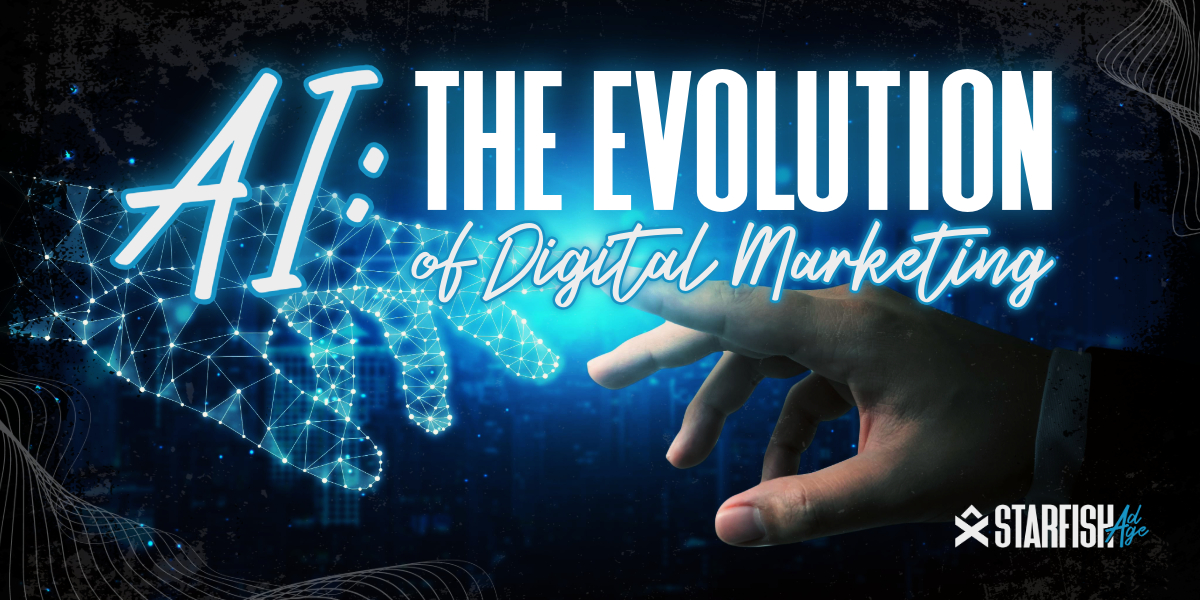
Discover how AI transforms digital marketing through automation, personalized strategies, and data-driven insights.

Discover five powerful strategies for building brand awareness, from partnerships and influencer marketing to social media and SEO.

Get the latest insights on Google’s ad tech monopoly trial and how it could reshape digital advertising, competition, and your ad strategies moving forward.

Follow TikTok’s legal battle against the ban and learn how it could affect creators. Get the facts and understand the potential future of the platform.

A few of the most significant marketing mistakes we’ve seen in 2024 so far, why they happen, and simple ways to avoid them to keep your campaigns on track.
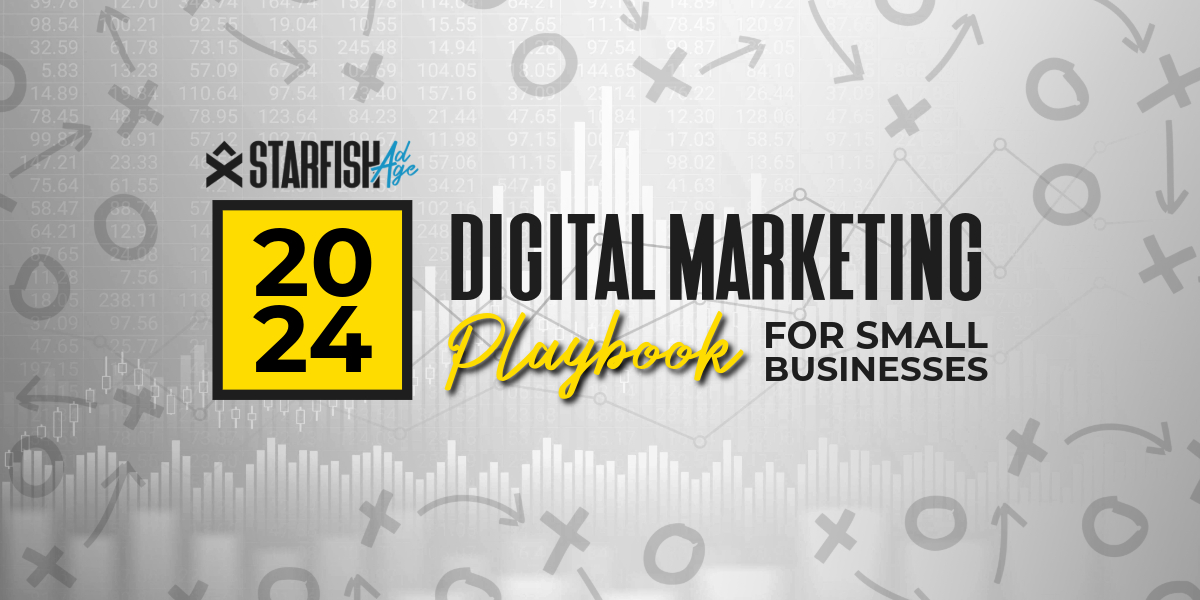
Explore key strategies in our 2024 Digital Marketing Guide. Learn to understand your audience, build an online presence, and optimize for business growth.
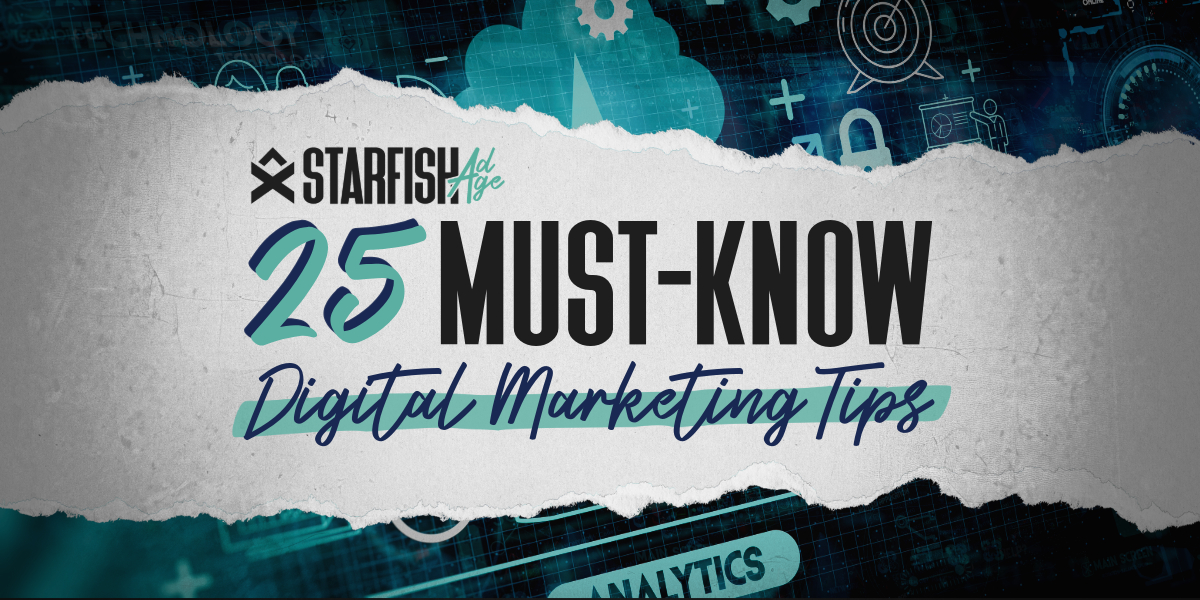
Discover 25 essential digital marketing tips for small businesses. Boost your online presence, attract customers, and drive sales with proven strategies.
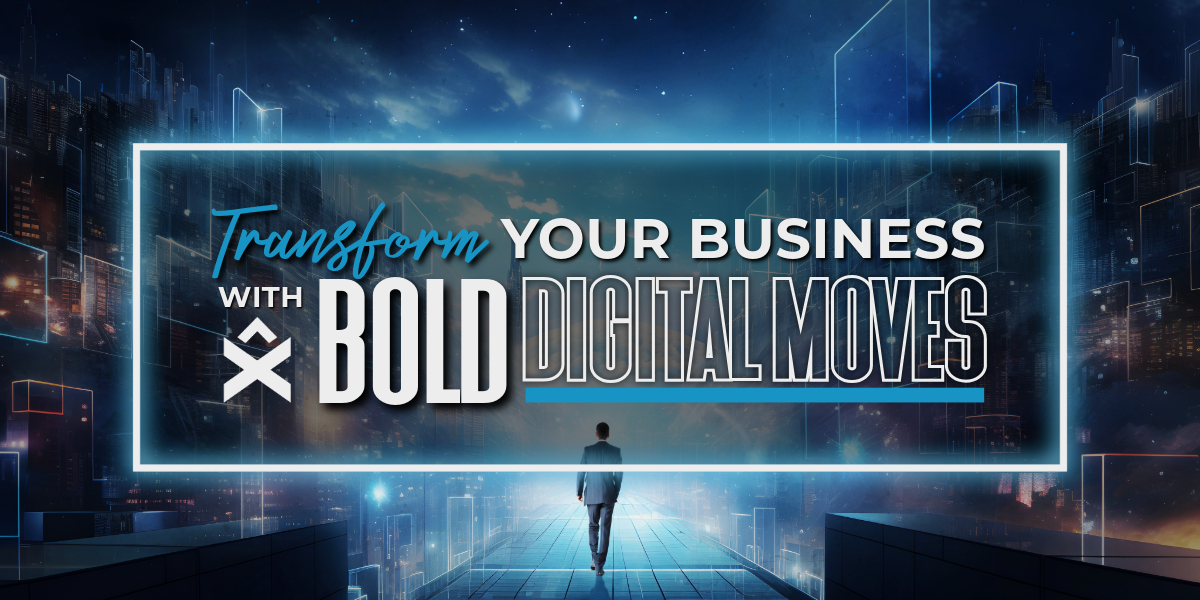
14 Essential Digital Marketing Solutions to Boost Your Business Growth
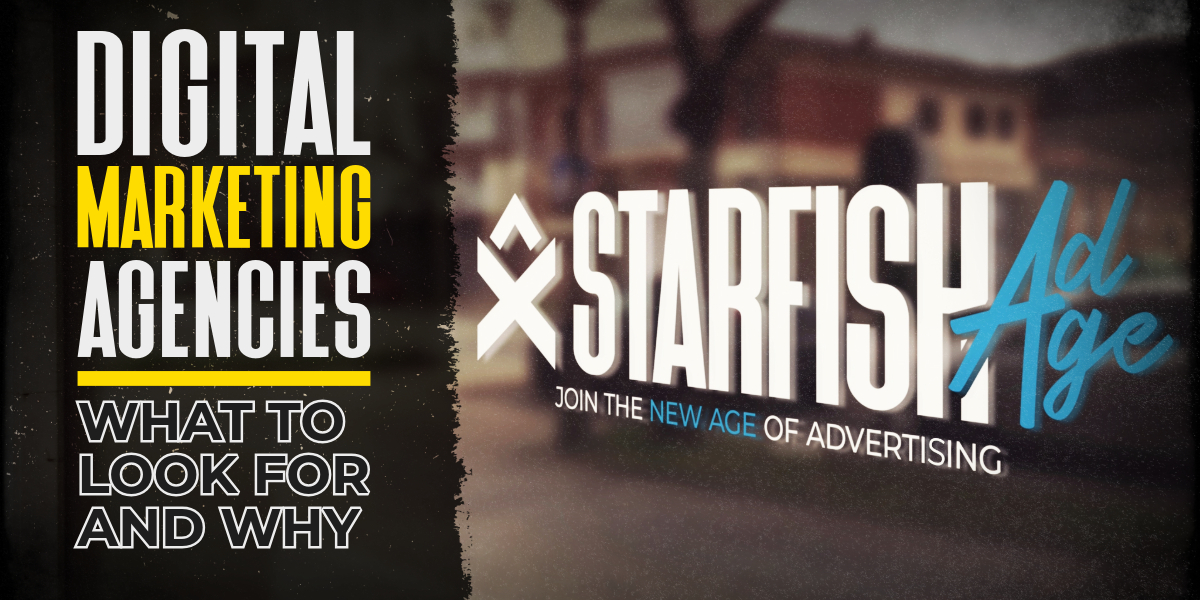
Learn how to select the best digital marketing agency for your small business, the benefits of hiring an agency, and tips for maximizing your online presence.
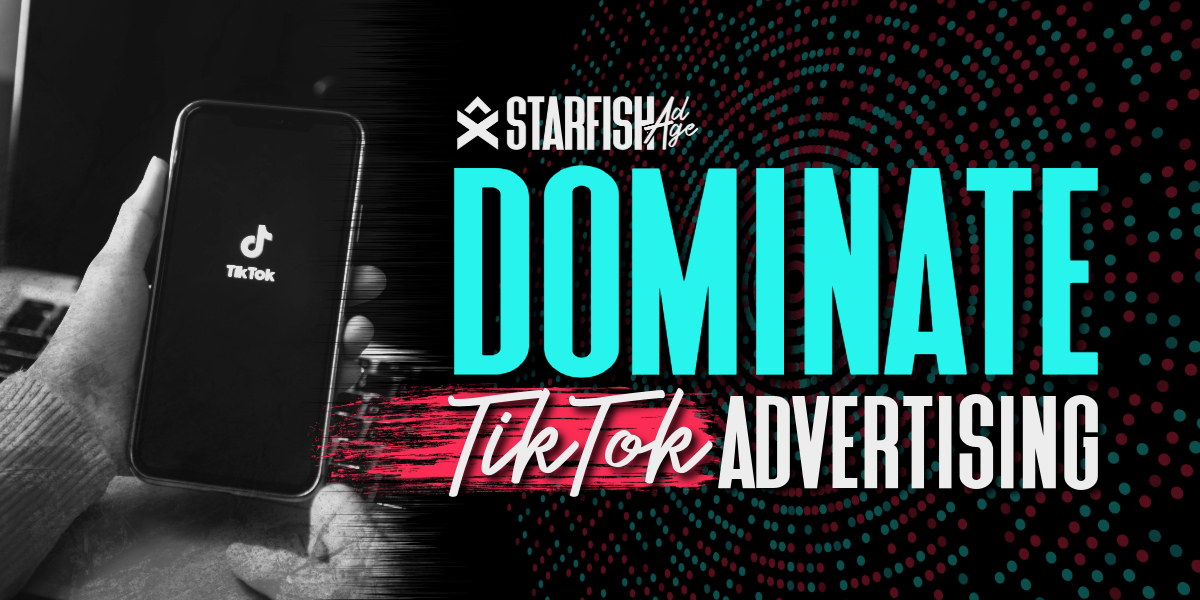
Learn how to leverage TikTok advertising, ad formats, targeting options, and best practices to increase brand awareness, and drive sales.

Learn about Connected TV (CTV) ads, their benefits, and how they work. Understand programmatic CTV advertising for effective digital marketing campaigns.
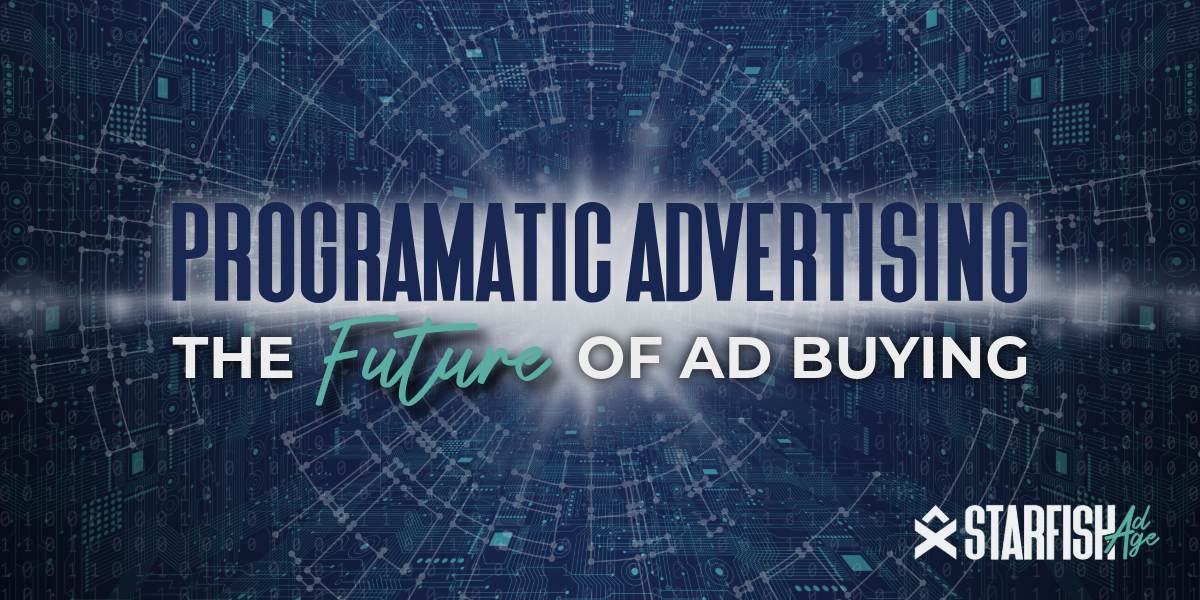
Discover the benefits of programmatic advertising, an automated method of buying digital ad space that enhances targeting, efficiency, and campaign performance.
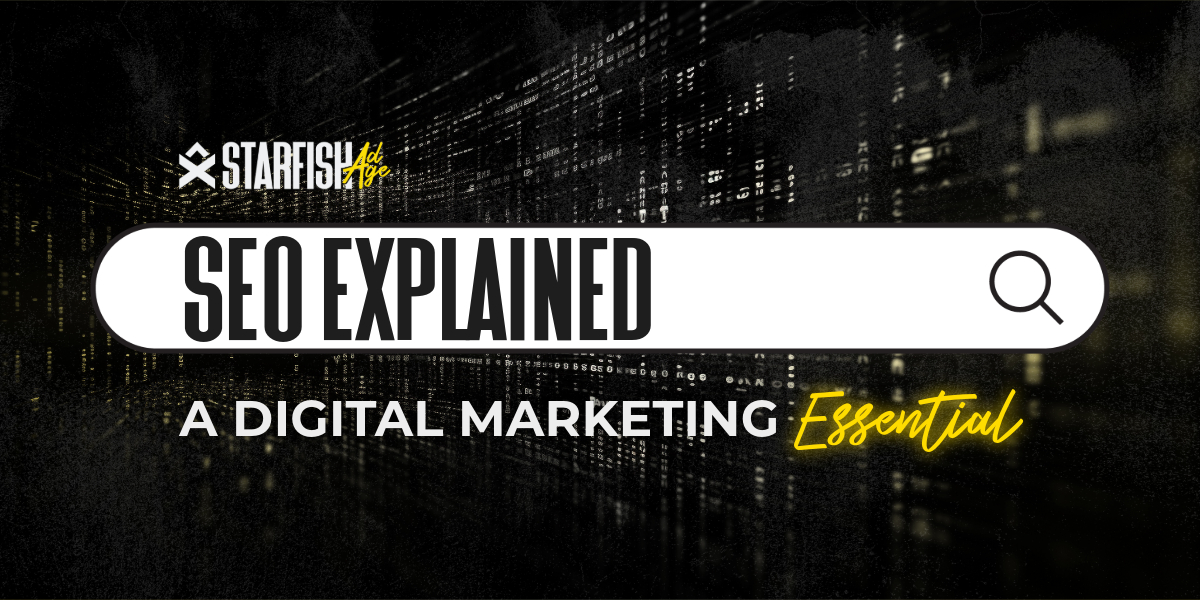
Discover what SEO in digital marketing is and why it matters. Learn how search engine optimization can increase your business’s success.

Learn how to advertise on Google effectively. The basics of Google Ads, from setting up your account to targeting your audience and driving qualified traffic.

Discover how to advertise on Facebook. Learn about Facebook ad campaigns, targeting options, and ad formats to reach your audience effectively.
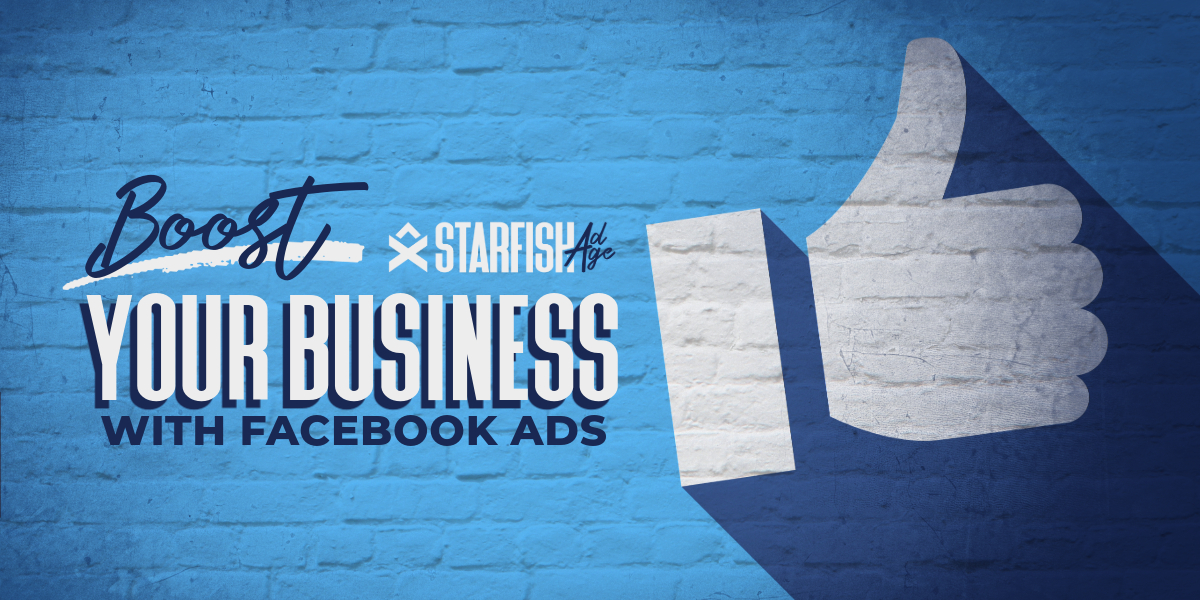
Discover how to advertise on Facebook. Learn about Facebook ad campaigns, targeting options, and ad formats to reach your audience effectively.
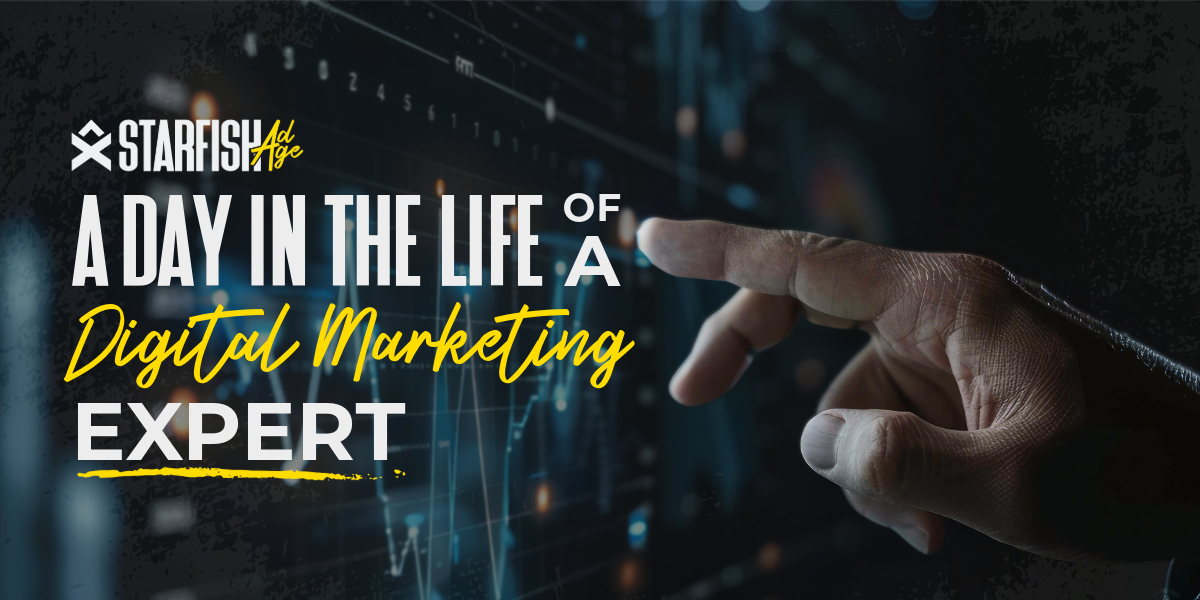
Explore digital marketing essentials for modern businesses. Explore the history, strategies, data-driven targeting, message marketing, and content creation.
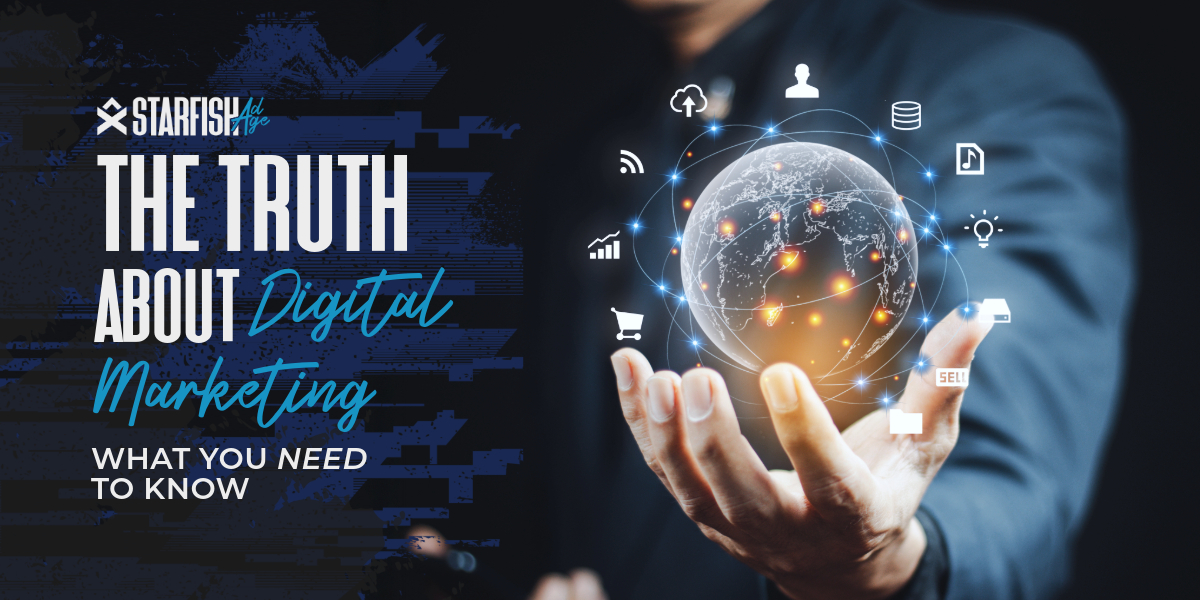
Explore digital marketing essentials for modern businesses. Explore the history, strategies, data-driven targeting, message marketing, and content creation.
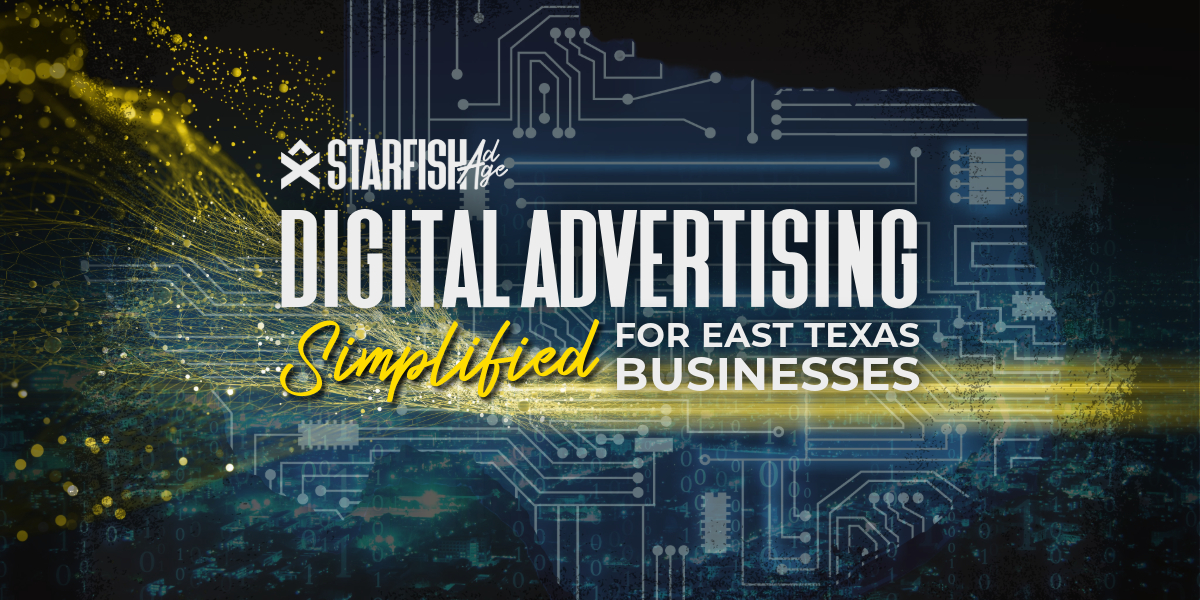
Explore the fundamentals and advanced strategies of how digital advertising works. Learn how to leverage targeted ads, and engage with your audience effectively.

Starfish Ad Age provides tips and strategies for choosing the best advertising platforms to promote your business, ensuring growth and maximizing ROI.
All Rights Reserved | Starfish Ad Age LLC | 2023 | Privacy Policy